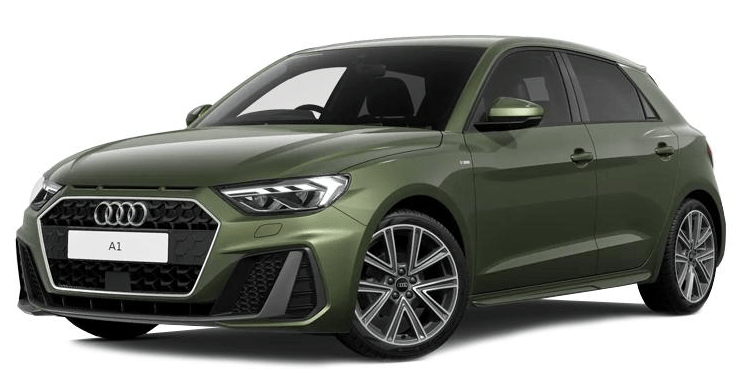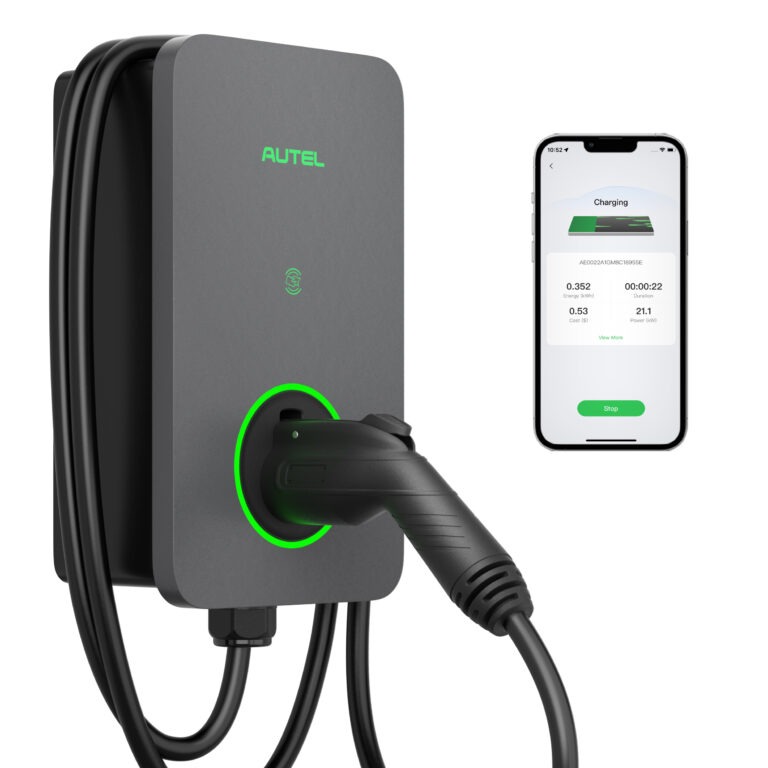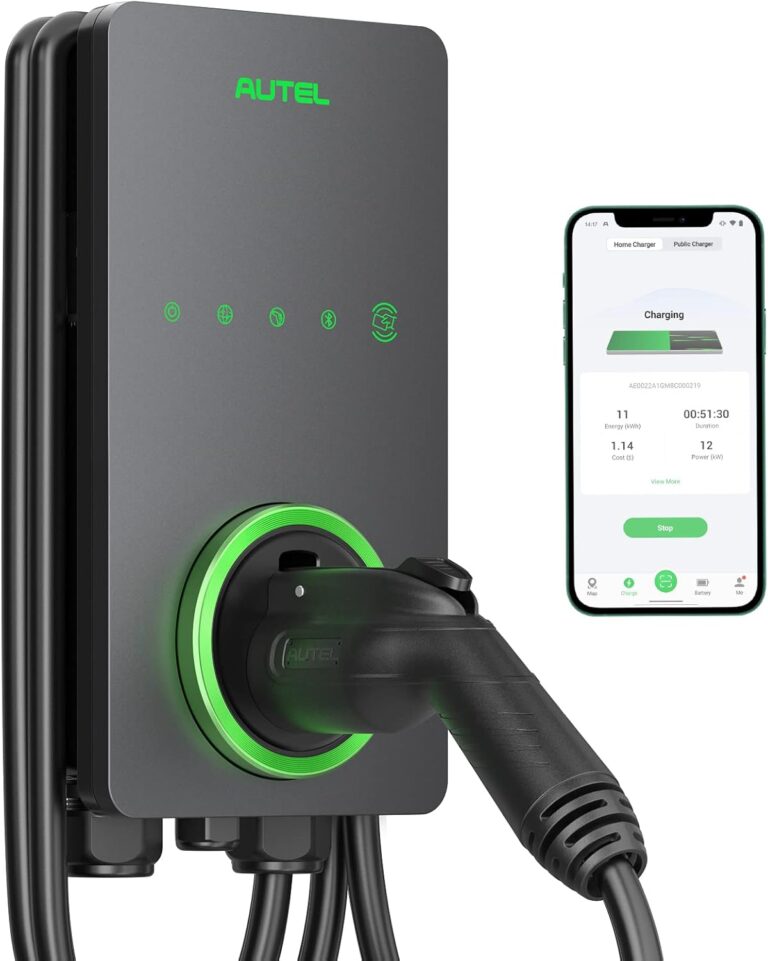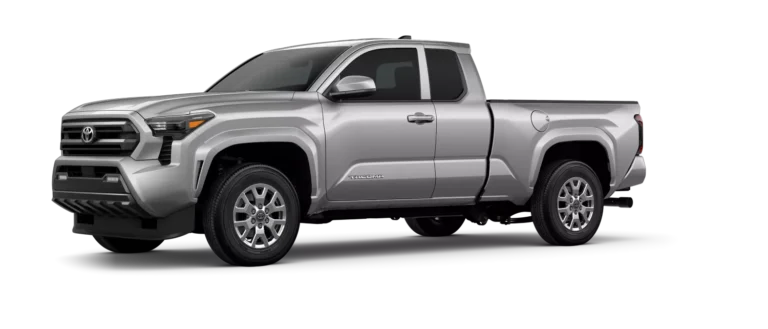
Audi A1 VIN Decoder and Options List
Audi A1 VIN Check and Audi A1 VIN Lookup
Where Do I Find My Audi A1 VIN?

Dashboard (Visible Through Windshield)
• Look through the lower corner of the windshield on the driver’s side.
• The VIN is stamped on a metal plate at the base of the dashboard – this is the quickest way to view it without opening the car.
Driver’s Door Jamb
• Open the driver’s door and look at the B-pillar or door frame.
• The certification label includes the VIN, vehicle weight data, and paint code.
Under the Hood
• Some Audi A1 models have the VIN stamped on the engine bay frame or firewall for factory identification.
• This location can help confirm authenticity during inspection or servicing.
Vehicle Documents
• Your VIN also appears on the V5C registration document (logbook), insurance policy, service booklet, and warranty papers.
• Digital copies may also be stored in your myAudi account if the car is registered online.
Ready To Check Your Audi A1 Spec?
Stop undervaluing your Audi A1, and never overpay again!
Get an instant, FREE car valuation for your Audi A1. Check how options, features, and specifications affect resale value with Check Your Spec.
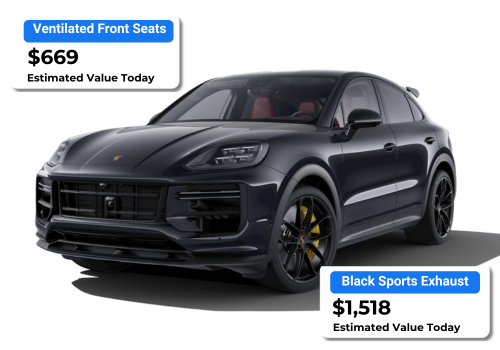
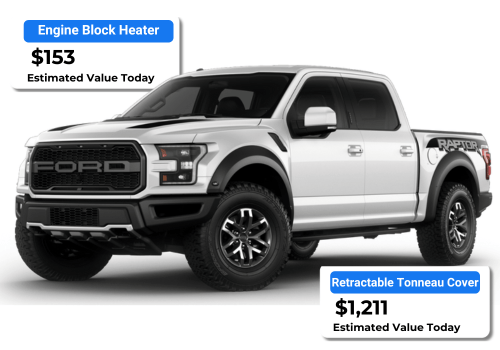
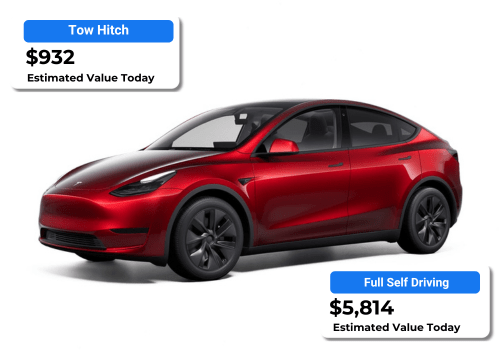
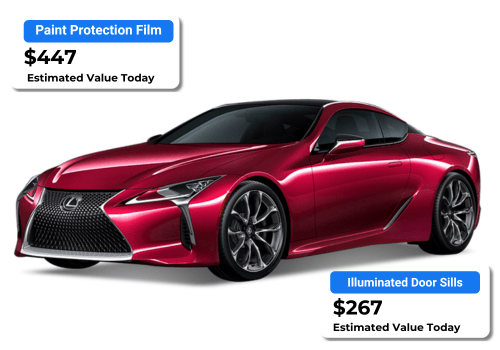
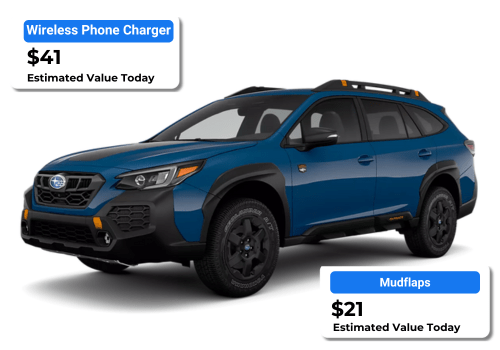
Article By: Dale Ogden
Dale Ogden is the founder of Check Your Spec and a recognized automotive expert with over 20 years of experience in vehicle valuations, forecasting, and asset management. A former Forecast Manager at CAP HPI – the UK’s leading vehicle valuation authority (think of them as the equivalent to Kelley Blue Book). He pioneered EV depreciation models now used by top manufacturers and has produced residual values for over 10,000 vehicles. Dale’s insights are trusted by automotive professionals, enthusiasts, and buyers worldwide.
Table of Contents
What Is My Audi A1 VIN?
Tucked into every Audi A1 is a 17 character VIN that identifies how it was made. Inside that code you will find the assembly plant, engine type, trim level, and safety systems that were fitted.
A quick VIN check reveals the precise combination of options that make your car distinct. Use the VIN to verify options and to understand exactly what sets your car apart.
Free Audi A1 VIN Decoder
What Are Audi A1 Option Codes?
Sometimes you notice a Audi A1 with a unique finish, upgraded upholstery, and wheels that make it special. Behind those choices are option codes that tell the story.
We will cover how these codes translate into equipment that shapes your A1’s character. They are not arbitrary. They are option codes that Audi uses to confirm features at build. They are usually printed in the service book, listed on a factory sticker in the trunk or wheel well, and accessible from any Audi dealer with your VIN.
How To Find Your Audi A1 Option List
Your Audi A1 option list reveals every feature, package, and specification your vehicle was equipped with when it left the factory. This includes trim level, paint color, interior materials, technology features, and optional equipment. To ensure accuracy, start with official Audi sources before relying on online databases.
Dealer Printout
• An Audi dealership can generate a detailed factory build sheet or “vehicle data specification” using your VIN.
• This includes all factory-installed options, packages, and equipment codes.
• It’s the most reliable and complete source of build information.
myAudi Account or App
• Register your vehicle on the myAudi portal or myAudi smartphone app using your VIN.
• Depending on your region and model year, you may see a digital summary of your car’s configuration, including key features and trim-specific details.
Original Window Sticker or Sales Invoice
• If available, the Monroney-style window sticker (for North American models) or original sales invoice will list all factory options, packages, and pricing.
• This is especially useful for verifying what was included in your car’s trim level.
Service Booklet or Vehicle Data Label
• Inside the owner’s manual or the spare wheel well, there’s often a vehicle data label listing your Audi A1’s option codes (PR codes).
• These three character alphanumeric codes (like 1AT, 7X2, or 9Q8) correspond to specific equipment or features.
Online VIN Decoders
• Some third party tools can decode your VIN and list basic factory specifications.
• Accuracy varies, so always confirm online results against your Audi dealer’s build data.
What Is An Audi A1 Build Sheet?
An Audi A1 build sheet – sometimes called a vehicle data sheet or production specification sheet – is an official factory document that lists exactly how your car was configured when it left the production line. It’s essentially your car’s birth certificate, showing every color, trim, option, and code applied during manufacturing.
What It Includes
• Factory option and equipment codes (PR codes)
• Engine, transmission, and drivetrain details
• Exterior color and paint code
• Interior trim materials, upholstery, and finishes
• Optional equipment such as lighting, infotainment, safety, and driver-assist systems
• Production details such as plant, build date, and model code
Why It’s Useful
• Buyers can confirm original factory options on a used Audi A1
• Sellers can highlight genuine equipment and accurately represent the car’s specification
• Owners and enthusiasts can verify authenticity, match parts, or reference the exact build when servicing or restoring the car
How to Get It
• Audi Dealer: Any Audi dealership can provide an official build sheet or “vehicle data specification” using your VIN.
• Vehicle Data Label: Found in your owner’s manual, service booklet, or spare wheel well, it lists all your PR codes and key build information.
• myAudi Account: In some regions, you can view your car’s factory build summary through the myAudi app or portal once registered with your VIN.
• Audi Customer Support: You can also contact Audi directly for a copy of your original build data, especially for older or imported models.
Audi A1 Engine Codes
Audi engine codes identify the exact engine type installed in your A1, including displacement, fuel type, induction system, and generation. These codes are essential for confirming originality, ordering parts, and understanding performance differences between trims and model years.
CAXA: 1.4L TFSI Inline-4
• Found in early first-generation Audi A1 models
• Turbocharged petrol engine producing around 122 horsepower
• Known for smooth delivery and strong low end torque
CAVE: 1.4L TFSI Twincharged Inline-4
• Features both a turbocharger and supercharger
• Produces up to 185 horsepower in performance variants
• Used in the A1 1.4 TFSI Sport and S Line models
CWVA: 1.6L MPI Inline-4
• Naturally aspirated petrol engine found in select markets
• Offers lower maintenance costs and reliable operation
• Common in entry level or fleet-spec A1 models
CAYC: 1.6L TDI Inline-4
• Turbo diesel engine used across the A1 range for high efficiency
• Produces around 105 horsepower and strong fuel economy
• Paired with manual or S tronic dual-clutch transmissions
EA888 (DADA, DJKA, DKZC): 2.0L TFSI Inline-4
• Used in second-generation A1 and performance oriented models such as the A1 40 TFSI and S1
• Turbocharged petrol engine producing between 200 and 231 horsepower
• Features direct injection, variable valve timing, and advanced cooling systems
CHZD: 1.2L TFSI Inline-4
• Entry-level turbocharged petrol engine for early A1 models
• Produces around 86 horsepower
• Lightweight and efficient, ideal for urban driving
Audi A1 Transmission Codes
Transmission codes identify the exact gearbox installed in your Audi A1 – including manual, automatic, or dual-clutch (S tronic) variants. These codes are useful when ordering parts, checking compatibility, or verifying originality.
Audi has used several transmission types across A1 generations, tailored to engine size and trim level.
MQ200: 5-Speed Manual Transmission
• Common in early 1.2 TFSI and 1.4 TDI variants
• Lightweight and simple design suited for smaller engines
• Known for reliability and low maintenance costs
MQ250: 6-Speed Manual Transmission
• Used with higher-output petrol and diesel engines
• Offers smoother high-speed cruising and better gear spacing
• Found in models such as the 1.4 TFSI and 1.6 TDI
DQ200: 7-Speed S Tronic Dual Clutch Transmission (Dry Clutch)
• Paired with 1.2 and 1.4 TFSI engines in early A1 models
• Delivers fast, seamless shifts with manual or automatic operation
• Compact and efficient, designed for front-wheel-drive layouts
DQ250: 6-Speed S Tronic Dual Clutch Transmission (Wet Clutch)
• Found in performance models like the A1 1.8 TFSI and S1
• Handles higher torque outputs up to around 350 Nm
• Known for durability and sporty gear response
DQ381: 7-Speed S Tronic Dual Clutch Transmission (Wet Clutch)
• Introduced in newer 2.0 TFSI variants, including A1 40 TFSI and S1 models
• Enhanced cooling and improved shift mapping
• Used in both front-wheel and quattro configurations
0CW: Aisin 6-Speed Automatic Transmission
• Conventional torque converter automatic used in select international markets
• Provides smooth shifts and low-speed comfort
• Often paired with lower-output petrol engines
Audi A1 Paint Codes
Audi uses specific factory paint codes to identify every color and finish applied to your vehicle. These codes ensure exact color matching for touch-up, restoration, or part replacement. Paint codes are usually found on the vehicle data label (inside the spare wheel well or service booklet) or can be obtained through an Audi dealer using your VIN.
Below is an organized list of Audi A1 paint codes, arranged alphabetically by code. Availability can vary by model year and market region.
L041: Black (Solid) – Common on older models
L0K1: White (Solid) – Early Audi production finish
L1RR: Solar Orange (Solid) – Used on TT RS and sporty trims
LA1X: Titanium Beige Metallic
LA3H: Salsa Red
LA3K: Canyon Red Metallic
LA3S: Amaryllis Red Metallic
LA5G: Turquoise Blue Metallic
LA5K: Electric Blue Metallic
LA5L: Mystic Blue Pearl Effect
LA5M: Azure Blue Pearl Effect
LA5Q: Storm Blue Metallic
LA5R: Norfolk Blue Pearl Effect
LA5T: Barbados Blue Metallic
LA5U: Royal Blue Metallic
LA6W: Fresco Green Metallic
LA6Z: Savannah Beige Metallic
LA7U: Pearl White Metallic
LA7W: Reflex Silver Metallic
LA9V: Brilliant Black (Solid)
LB1M: Honey Yellow
LB5N: Kingfisher Blue Metallic
LB5R: Deep Sea Blue Pearl Effect
LB5S: Denim Blue Pearl Effect
LB7Z: Satin Silver Metallic
LC5J: Atlantic Blue Pearl Effect
LC5M: Moonlight Blue Pearl Effect
LC5Q: Shadow Blue Metallic
LC5X: Azure Blue Pearl Effect
LC6V: Pistachio Green Metallic
LC6X: Nordic Green Pearl Effect
LC7V: Atlas Grey Metallic
LC9Z: Black Magic Pearl Effect
LD1W: Harvest Gold Metallic
LD5Q: Petrol Blue
LD6S: Irish Green Pearl Effect
LD7U: Offroad Gray Metallic
LD7X: Platinum Gray Metallic
LD7Y: Quartz Gray Metallic
LD8Q: Brillantbeige Metallic
LE1P: Dakar Beige Metallic
LG9R: Silver Bird Metallic
LH1X: Sand Beige Metallic
LK5Y: Stratus Blue Metallic
LK7Y: Storm Gray Metallic
LL1U: Desert Beige Metallic
LM7W: Silver Metallic
LN5Y: Navara Blue Metallic
LP5X: Sepang Blue Pearl Effect – Common on RS models
LR1X: Kalahari Beige Metallic
LR7L: Ice Silver Metallic
LS3T: Crimson Red Pearl Effect
LS9R: Glacier White Metallic
LT5U: Galaxy Blue Metallic
LU3R: Flash Red (Solid)
LV5W: Scuba Blue Metallic
LV7W: Misanogrey Pearl
LW5Q: Ascari Blue Metallic
LX1X: Manhattan Gray Metallic
LX1Z: Havannagrey Metallic
LX5N: Aviator Blue Pearl Effect
LX5Q: Scuba Blue Metallic
LX5R: Moonlight Blue Metallic
LX5X: Moonlight Blue Metallic (slightly different tone than LX5R)
LX6M: Camouflage Green Metallic
LX6W: Cliff Green Metallic
LX6Y: Ipanema Brown Metallic
LX7W: Ice Silver Metallic
LX7X: Munster Silver Metallic
LX7Y: Daytona Gray Pearl Effect – Popular on S and RS models
LX7Z: Dolomite Gray Metallic
LX8W: Argus Brown Metallic
LX8X: Navarra Blue Metallic
LX8Y: Terra Brown Metallic
LX8Z: Arab Blue Metallic
LX9X: Mythos Black Metallic
LY1P: Dakota Gray Metallic
LY3J: Brilliant Red (Solid) – Brillantrot in German
LY3S: Canyon Red Metallic – Canyonrot in German
LY3U: Chili Red Metallic
LY3Z: Shiraz Red Metallic – Shirazrot in German
LY7C: Nardo Gray
LY7F: Daytona Gray Pearl Effect – Daytonagrau Perleffekt in German
LY7G: Quartz Gray Metallic – Quarzgrau in German
LY7H: Akoya Silver Metallic – Akoyasilber in German
LY7J: Avus Silver Metallic – Avussilber in German
LY7W: Silver Gray Metallic – Silbergrau in German
LY7X: Opal Gray Metallic – Opagongrau in German
LY9B: Brilliant Black (Solid) – Brilliant Schwarz in German
LY9C: Ibis White (Solid) – Ibis Weiss in German
LY9F: Arctic White (Solid) – Arktisweiss in German
LY9G: Casablanca White (Solid) – Casablancawiss in German
LY9H: Polar White (Solid) – Polarweiss in German
LY9K: Deep Black (Solid) – Tiefschwarz in German
LY9T: Mythos Black Metallic – Mythosschwarz Metallic in German
LZ1U: Cactus Green Metallic – Kaktusgrun in German
LZ3M: Garnet Red Pearl Effect – Granatrot Perleffekt in German
LZ3N: Ruby Red Pearl Effect – Rubynrot Perleffekt in German
LZ3Q: Rosewood Red Pearl Effect – Rosenholzrot Perleffekt in German
LZ3S: Jaipur Red Pearl Effect – Jaipurrot Perleffekt in German
LZ3W: Merlot Red Pearl Effect – Merlotrot Perleffekt in German
LZ5A: Deep Sea Blue Pearl Effect – Tiefseeblau Perleffekt in German
LZ5C: Mauritius Blue Pearl Effect – Mauritusblau Perleffekt in German
LZ5D: Night Blue Pearl Effect – Nachtblau Perleffekt in German
LZ5E: Mugello Blue Pearl Effect – Mugelloblau Perleffekt in German
LZ5F: Sprint Blue Pearl Effect – Used on S and RS models
LZ5G: Kingfisher Blue Pearl Effect – Eisvogelblau Perleffekt in German
LZ5J: Moro Blue Pearl
LZ5L: Ming Blue Metallic – Mingblau Metallic in German
LZ6E: Murano Green Metallic – Muranogrun Metallic in German
LZ6G: Deep Green Pearl Effect – Tiefgrun Perleffekt in German
LZ6H: Racing Green Pearl Effect – Racinggrun Perleffekt in German
LZ6W: Emerald Green Pearl Effect – Smaragdgrun Perleffekt in German
LZ7G: Florentine Silver Metallic – Florentinsilber Metallic in German
LZ7H: Meteor Gray Pearl Effect – Meteorgrau Perleffekt in German
LZ7K: Ice Gray Metallic – Eisgrau Metallic in German
LZ7L: Lava Gray Pearl Effect – Lavagrau Perleffekt in German
LZ7S: Daytona Gray Pearl Effect – Used on S and RS models
LZ7W: Ice Silver Metallic – Eissilber Metallic in German
LZ7X: Nijs Gray Metallic – Nijsgrau Metallic in German
LZ9V: Raven Black Pearl Effect – Rabenschwarz Perleffekt in German
LZ9W: Ebony Black Pearl Effect – Ebenholzschwarz Perleffekt in German
LZ9Y: Phantom Black Pearl Effect – Phantomschwarz Perleffekt in German
Audi A1 Exterior Trim Codes
Exterior trim codes identify the specific styling details, finishes, and exterior accessories applied to your Audi A1 at the factory. These codes are useful for confirming the car’s appearance package, ordering replacement parts, or verifying original configuration. Trim details can include mirror types, grille finishes, roof options, and accent materials.
EK: Black Optics Package
• Replaces standard chrome or aluminum accents with gloss black trim
• Includes window surrounds, grille frame, and mirror caps
• Common on S Line and Edition One models for a sportier appearance
PC: Premium Color Package
• Indicates pearlescent or custom paint paired with specific exterior trims
• May include color-matched mirrors and unique finish accents
• Usually tied to special editions or upper trims
RB: Roof Rails in Black
• High-strength roof rails finished in black powder coat
• Support factory crossbars and cargo accessories
• Optional on certain trims, standard on SUV-style variants
RF: Roof Rails in Silver
• Bright silver finish for contrast against darker exterior colors
• Common on higher-end trims and European market models
• Compatible with factory or OEM roof attachments
PM: Power Mirrors Heated and Folding
• Electrically adjustable and heated exterior mirrors
• Folding function for tight spaces or automatic retraction when locked
• May include turn signal repeaters and auto-dimming glass
ALU: Aluminum Trim Package
• Brushed aluminum exterior detailing on grille, mirror caps, and door sills
• Standard on S Line and higher-performance trims
• Adds a premium metallic contrast to darker body colors
CFK: Carbon Fiber Exterior Pack
• Carbon fiber mirror caps, front splitter, and rear diffuser accents
• Limited to special edition or S1-inspired configurations
• Reduces weight and enhances performance styling
XEN: Xenon Plus Headlight Surrounds
• Distinctive trim elements surrounding Xenon Plus or LED headlights
• Available on higher trims with adaptive lighting systems
• May vary slightly by model year and market
BPK: Black Package
• Combines gloss black window surrounds, grille frame, and Audi rings
• Often paired with dark mirror housings and sport bumpers
• Enhances the A1’s performance-oriented visual appeal
Audi A1 Wheel Codes
Wheel codes identify the exact factory wheels installed on your Audi A1, including diameter, width, design style, and finish. These codes are important when verifying originality, sourcing replacement wheels, or upgrading to OEM compatible options. Wheel styles and finishes vary by trim level, engine variant, and market region.
8X0 601 025 AG: 15-inch Alloy Wheel (5-Spoke Design)
• Standard on early A1 base and SE trims
• Lightweight design focused on ride comfort and efficiency
• Typically paired with 185/60 R15 tires
8X0 601 025 AH: 16-inch Alloy Wheel (10-Spoke Design)
• Common on Sport and Technik trims
• Balances comfort and sharper handling
• Compatible with 215/45 R16 tire sizes
8X0 601 025 AM: 17-inch Alloy Wheel (5-Arm Dynamic Design)
• Found on S Line and higher-spec models
• Sporty multi-spoke pattern emphasizing visual stance
• Fitted with 215/40 R17 performance tires
8X0 601 025 AQ: 17-inch Alloy Wheel (Bi-Color Finish)
• Machined two-tone surface with gloss black inserts
• Exclusive to S Line Competition and limited-edition variants
• Provides a premium look while maintaining OEM fitment
8X0 601 025 BE: 18-inch Alloy Wheel (5-Twin-Spoke Rotor Design)
• Featured on A1 Black Edition and S1 models
• Signature Audi sport design with concave face
• Optimized for high-speed stability and brake clearance
8X0 601 025 BJ: 18-inch Alloy Wheel (Gloss Titanium Finish)
• Lightweight forged aluminum variant
• Offered on S1 and Audi Exclusive configurations
• Dark titanium paint enhances performance styling
Winter Wheel Options
• Smaller 15-inch or 16-inch steel or alloy winter wheels were available in select regions
• Narrower tires improve traction in snow and cold weather
• Factory-approved sets include TPMS sensors and OEM center caps
Audi A1 Lighting Codes
These are some factory lighting codes used by Audi. Always verify the exact configuration for your car by checking the build sheet, VIN printout, or dealer records.
• 8IZ: LED headlights
• 8G1: High beam assist
• 8WM: All-weather light
• 8VG: LED rear combination lamps
• 8WH: Static turning light
• 8X1: Headlight washer system
• 8Q3: Automatic headlight range adjustment / self-leveling headlights
• 8SP: LED rear combination lamps
Lighting names and features may differ by region or model year, so it’s important to cross-check anything you find against official factory documentation.
Audi A1 Interior Option Codes
Interior option codes define the comfort, trim, and technology features fitted to your Audi A1 at the factory. These codes help identify seat types, materials, climate systems, and convenience features that may vary by trim level and market.
Seating
• 4A4: Heated front and rear seats
• 3PN: Power driver seat with memory function
• N5F: Fine Nappa leather seating surfaces
• Q1A: Standard front seats
• N0E: Cloth seat upholstery
• 4D3: Front seat ventilation (availability varies by model)
• Q1G: Sports seats in front with enhanced side bolsters
• 7P1: Electrically adjustable lumbar support for front seats
Steering Wheel
• 1XW: Leather steering wheel, 4-spoke design
• 2C7: Manually adjustable steering column (height and reach)
• 1XX: Leather 3-spoke multifunction steering wheel with shift paddles
• 2PF: Flat-bottom sport steering wheel (model dependent)
Climate Control
• 9AK: Automatic air conditioning with multi-zone capability
• 9AD: Climatronic system with impact pressure control (CFC-free)
• 9AQ: Automatic air conditioning (standard configuration)
• 9M9: Auxiliary heater (availability varies by market)
Other Interior Features
• 4L6: Auto-dimming interior rearview mirror
• 5MA: Decorative inlays in Aluminum Ellipse Silver finish
• 9VD: Audi Sound System (branded audio)
• 6NJ: Black cloth headliner
• ER1: Regional code for ECE radio specification
• 6E3: Front center armrest
• QV3: TV reception system (market dependent)
• 7X2: Park distance control front and rear
• 7HE: Leather package (extended interior trim)
• 9VC: Branded sound package
Audi A1 Safety and Driver Assistance Codes
Safety and driver assistance codes identify the systems that enhance driving confidence, protection, and convenience in your Audi A1. These features range from active safety technologies like stability control and adaptive cruise control to passive systems such as airbags and ISOFIX mounts. Availability varies by model year, trim, and market region.
Driver Assistance
• PCF: Assistance package including Lane Assist and Adaptive Cruise Control (ACC)
• UH2: Hill Hold Assist for easier starts on inclines
• 7X5: Park Assist with automated steering guidance
• KA6: 360° Surround View Camera System
• 7X2: Park Distance Control for front and rear sensors
• 8T2: Standard Cruise Control System
• KA2: Rear View Camera System
• 8T8: Adaptive Cruise Control with distance regulation
• 7Y1: Side Assist with blind spot monitoring
• QK1: Camera-based Lane Assist (market dependent)
• QR9: Traffic Sign Recognition using front camera input
• 7L8: Start/Stop System for improved fuel efficiency
Safety
• 3B7: Child Seat Anchor Points (ISOFIX and Top Tether)
• 1AT: Electronic Stabilization Program (ESP) with traction control
• 4UF: Driver and front passenger airbags with deactivation option for passenger side
• 4H5: Manual Child Safety Lock
• 7K6: Active Tire Pressure Monitoring System
• 1AS: Electronic Stability Control (ESC)
Audi A1 Infotainment and Communication Codes
Infotainment and communication codes identify the multimedia, connectivity, and navigation systems fitted to your Audi A1 at the factory. These systems manage entertainment, vehicle data, and driver interaction features. Equipment can vary significantly by trim level, model year, and market region.
Navigation and Connectivity
• 7UG: MMI Navigation Plus with MMI Touch
• 7UF: MMI Radio Plus with 10-inch touchscreen
• 7UH: MMI Radio Basic (entry-level multimedia system)
• 8DY: Audio interface with USB-C and Bluetooth connectivity
• 8WQ: Smartphone interface with Apple CarPlay and Android Auto integration
• EL3: Online service module for Audi Connect (market dependent)
• QV3: Digital TV reception (available in select regions)
• ER1: ECE specification for radio tuning and frequency settings
Sound Systems
• 9VD: Audi Sound System with 6 to 8 speakers
• 9VK: Bang & Olufsen Premium Sound System (optional on higher trims)
• 9VD: Standard branded sound package with amplifier
• 9VC: Advanced sound package (market dependent)
• 8RM: Digital radio reception DAB/DAB+
• 9WT: USB and auxiliary input media interface
Display and Controls
• 9S0: Digital instrument cluster
• 9S8: Audi Virtual Cockpit with 10.25-inch full digital display
• 8G1: High beam assist (integrated in lighting and driver assist systems)
• 8T8: Adaptive cruise control display integration
• 8IY: Ambient interior lighting with adjustable color profiles
• 8T6: Head-up display (availability limited to select trims)
Communication and Telematics
• 9ZX: Bluetooth hands-free system with voice control
• 9ZV: Wireless smartphone charging pad
• 9W7: Bluetooth phone connection with extended functions
• 9M9: Auxiliary heater remote control integration
• 0E3: Data communication module (DCM) for remote vehicle access
• 9WC: Audi Connect Navigation and Infotainment with LTE connectivity
Audi A1 Common Option Codes
General Equipment
• 0TD: Floor mats in front and rear
• 0VF: Owner’s manual
• 0FA: Standard manufacturing sequence
• F0A: No special-purpose vehicle standard equipment
• L0L: Left-hand drive configuration
• V0A: Tires without specified brand
• NM1: Engine cover
• 1S1: On-board tool kit
• 1G8: Breakdown set (tire repair kit)
• 1PA: Standard wheel bolts
Body and Exterior
• 1SA: Without underbody protection
• 3FA: Without roof insert
• 4E0: Without servo closing for tailgate or trunk lid
• 4GF: Heat insulating glass
• 6W1: Front license plate carrier
• 5J0: Without rear spoiler
• 2P0: Without loading edge protection
• 2Z0: Without nameplate set
• 6C0: Without additional body covers
Powertrain and Performance
• 1X1: Four-wheel drive
• 2H1: Drive Select system
• 6Y2: Top speed limiter
• TL0: Base engine designation
• J0B: Battery 380 A, 68 Ah
• NY0: Standard battery or generator capacity
• 1VG: Installation parts for engine
Comfort and Convenience
• 4K4: Central locking system
• 4I2: Central locking with remote control
• QZ7: Power steering
• QJ1: Chrome trim package
• 6S2: Rear reading lights
• 7E6: Electric auxiliary air heater
• 7X2: Park distance control (front and rear)
• 9T1: Heated washer nozzles in front
• 2WA: Without additional tires
Mirrors and Glass
• 5RQ: Right exterior mirror convex
• 5SG: Left exterior mirror flat
• 4X1: Side airbags in front
• 4GF: Heat insulating windshield
• 8WA: Without front fog lights
Interior and Trim
• 6V1: Rear trim panel
• 6NJ: Headlining in black cloth
• 5MA: Decorative inlays in aluminum or model-specific finishes
• 9JA: Without smoker package
• 9Q1: Multi-function display
• 9M0: Without auxiliary heater
Electrical and Safety Systems
• 1AT: Electronic stabilization program with traction control
• 7K1: Tire pressure monitoring system
• 1C1: Antifreeze to -25°C (tolerance to -30°C)
• 7A0: Without alarm system
• 8Y1: Two-tone horn
• AV1: Driving on the right
• 7K0: Without tire pressure monitoring system
• 7G0: Without preparation for VTS tracking system
Tires, Wheels, and Chassis
• C4X: Alloy wheels 7.5J x 17
• GP0: Without driving strategy (base configuration)
• 0JB: Weight category, front axle weight range 2
• 0Y1: Standard climatic zones
• 1C1: Cold-weather antifreeze rating
• 1SA: No underbody protection
Child and Safety Equipment
• 3B4: Child seat anchor points (ISOFIX)
• 4UF: Front airbags with passenger-side deactivation
• 4H5: Manual child safety lock
How Audi A1 Options Affect Value
Factory options can significantly influence the resale value, desirability, and long term ownership appeal of an Audi A1. Well equipped cars tend to attract more buyers and retain stronger value, while base spec or sparsely optioned examples often sell for less. Understanding which options matter most helps you make smarter buying or selling decisions.
Performance and Drivetrain Options
• S Line and S1 variants command the highest resale premiums thanks to upgraded suspension, larger brakes, and more powerful engines such as the 2.0 TFSI.
• S tronic dual-clutch transmissions (DQ200, DQ250) are highly desirable for their smooth shifting and fuel efficiency, provided they’ve been properly serviced.
• Cars equipped with Drive Select (2H1) or sport suspension packages generally appeal to enthusiasts and hold stronger residual value.
What to look for: Confirm that the gearbox and suspension match the VIN’s build data; many “S Line look” cars lack the true performance hardware.
Interior and Comfort Features
• Options such as leather or Alcantara upholstery (N5F, N7U), heated seats (4A3, 4A4), and dual-zone climate control (9AK) enhance comfort and resale appeal.
• A flat-bottom sport steering wheel (2PF), aluminum inlays (5MA), and black headlining (6NJ) give the cabin a premium feel that buyers recognize.
• The Bang & Olufsen or Audi Sound System (9VK, 9VD) adds a distinct value bump over the standard setup.
What to look for: Inspect for wear on leather seats and steering wheels; these affect both condition grading and resale value. Verify seat and climate features function properly.
Technology and Infotainment Packages
• The MMI Navigation Plus (7UG) and Virtual Cockpit (9S8) significantly enhance usability and resale desirability.
• Features like Apple CarPlay / Android Auto (8WQ) and Bluetooth with voice control (9ZX) are now expected in modern cars; missing them can reduce appeal.
• Audi Connect and Bang & Olufsen audio are particularly valued in higher trims.
What to look for: Check the MMI system for smooth operation and recent software updates. Buyers value working tech features; non functioning systems can hurt resale.
Exterior Styling and Wheels
• S Line exterior styling (PRU) and Black Package (BPK) improve visual appeal and resale.
• Desirable factory paint colors such as Mythos Black (LY9T), Glacier White (LS9R), and Navarra Blue (LX8X) tend to sell faster than uncommon tones.
• 17-inch or 18-inch alloy wheels (C4X, 8X0 601 025 BE) enhance stance but check for curb rash and matching tires.
What to look for: Avoid aftermarket modifications that can lower value. Original wheels, badges, and trim packages always strengthen resale confidence.
Safety and Driver Assistance
• Assistance packages (PCF) including lane assist, adaptive cruise, and parking sensors increase desirability, especially in urban markets.
• Systems like rear-view camera (KA2) and LED headlights (8IZ) are often differentiators between trims and add real-world convenience.
What to look for: Ensure all sensors and cameras operate correctly; replacement can be expensive and may reduce profit margin at resale.
Documentation and Provenance
• Cars with a complete build sheet, service history, and window sticker generally sell for more.
• Factory originality: including OEM wheels, unmodified suspension, and full equipment functionality helps preserve long term value.
What to look for: Ask for a VIN-based equipment report or dealer build printout. Cross-check options like sound systems, lighting, and upholstery with their factory codes such as 9VK, 8IZ, or N5F.
Audi A1 FAQ
Does the Audi A1 have Apple CarPlay and Android Auto?
What engines are available in the Audi A1?
How can I find out which options my Audi A1 was built with?
Is the Audi A1 reliable and expensive to maintain?
Unlock accurate valuations for your car’s features in seconds – find out what your options are worth today and in the future.

